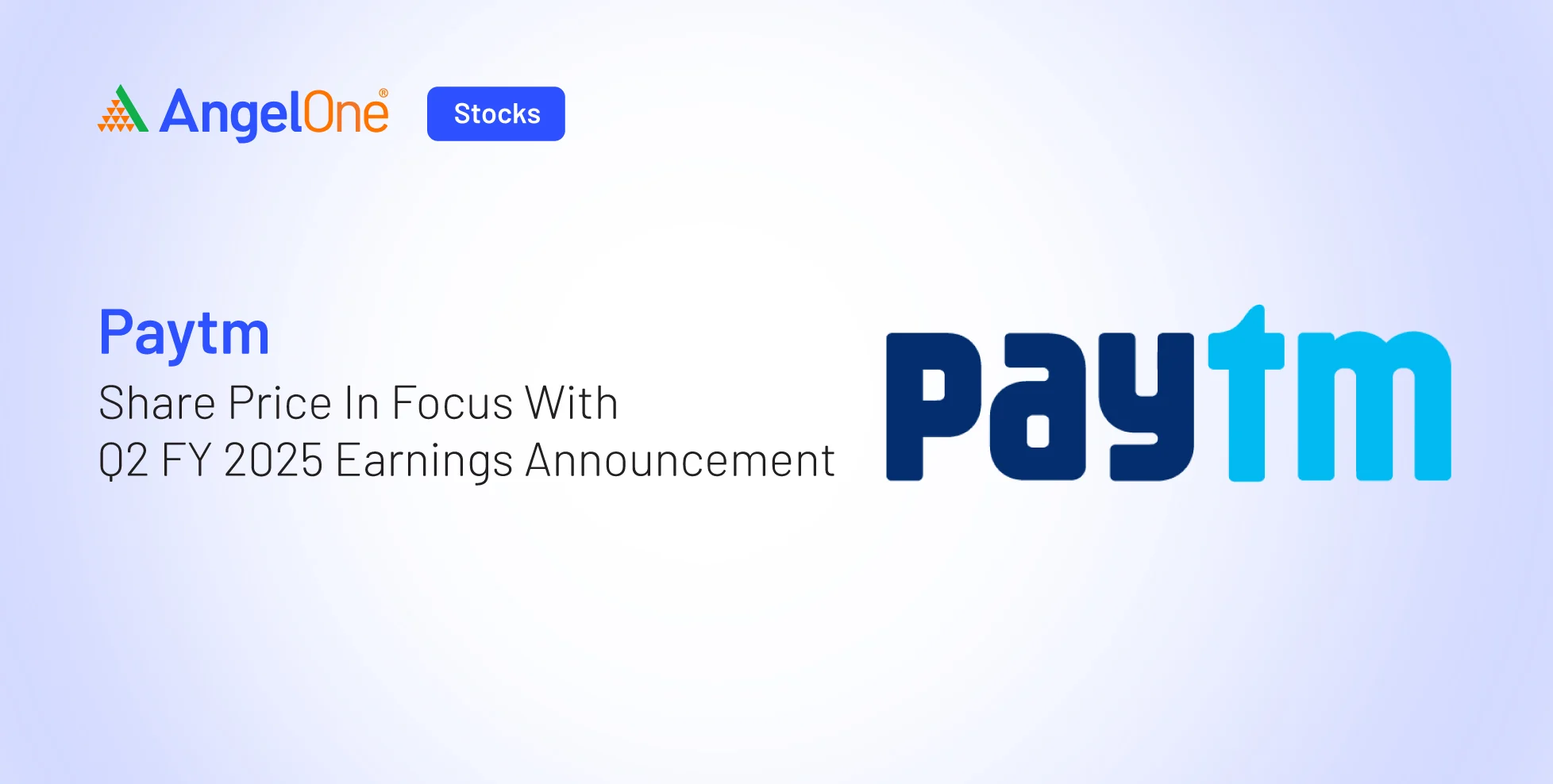Once hailed as India’s fintech pioneer, Paytm (One97 Communications Ltd.) has had a rollercoaster journey on the stock market since its high-profile IPO in November 2021. From a disappointing debut to mounting losses, regulatory hurdles, and a drastic valuation correction — Paytm has faced it all. However, as of July 2025, its share price has shown significant recovery, sparking fresh interest among retail and institutional investors alike.
This blog explores share price journey, what’s driving the recent rally, key business developments, financial performance, and whether this rebound is sustainable in the long run.
📊 Current Share Price Snapshot (as of July 22, 2025)
- Paytm Share Price: ₹1,052
- Market Cap: ₹67,500 crore approx.
- 52-Week High: ₹1,097
- 52-Week Low: ₹405
- YTD Return (2025): +86%
- 1-Year Return: +122%
Paytm’s share price has more than doubled in the last 12 months, making it one of the top-performing large-cap tech stocks in India this year. But what’s behind this revival?
🏁 From IPO Woes to Growth Momentum
Let’s rewind briefly. When launched its IPO in November 2021 at ₹2,150 per share, it was India’s biggest IPO ever. However, the stock listed at a discount and continued falling, losing over 70% of its value in the first year. By early 2023, it was trading below ₹500.
Critics pointed to:
- Steep losses
- Confusing business model
- Lack of profitability
- Intense competition from PhonePe, Google Pay, and others
However, 2024 and 2025 marked a strategic turnaround, with the company focusing on:
- Cost control
- Scaling high-margin businesses (like financial services)
- Reducing cash burn
- Exiting non-core verticals
- Boosting merchant subscriptions
These efforts are now reflected in its improved financial metrics and stock performance.
💰 Q1 FY2026: Strong Performance Backing the Rally
Paytm reported its Q1 FY26 (April–June 2025) earnings recently, and the numbers impressed investors:
| Metric | Q1 FY26 | Q1 FY25 | YoY Change |
|---|---|---|---|
| Revenue | ₹2,250 crore | ₹1,760 crore | +27.8% |
| EBITDA (excl. ESOPs) | ₹230 crore | ₹84 crore | +174% |
| EBITDA Margin | 10.2% | 4.8% | Improved |
| Net Loss | ₹50 crore | ₹150 crore | Narrowed |
| Monthly Transacting Users | 10.4 crore | 8.9 crore | +17% |
| Loan Disbursements | ₹17,000 crore | ₹12,554 crore | +35% |
Key Takeaways:
- The company is nearing EBITDA breakeven (after ESOP).
- Lending and merchant subscription businesses continue to scale rapidly.
- Focus on high-frequency use cases like bill payments, transit, and insurance is paying off.
📌 What’s Driving Paytm’s Share Price Rally?
1. Improved Profitability
has managed to cut operational losses significantly and improve unit economics. With cost control measures, operating leverage, and focus on core offerings, investors are seeing a clearer path to consistent profitability.
2. Fintech Lending Scale
financial services segment — particularly Buy Now Pay Later (BNPL) and merchant loans — has emerged as a strong revenue contributor. In Q1 FY26, over ₹17,000 crore in loans were disbursed through partnerships with NBFCs.
3. RBI Ban on Paytm Payments Bank (PPBL) – Crisis Turned Opportunity?
Earlier in 2024, the RBI barred Paytm Payments Bank from onboarding new users and offering certain services. This initially caused panic, but Paytm quickly pivoted by:
- Migrating wallets to partner banks
- Relying on third-party bank rails
- Partnering with Axis Bank, SBI, HDFC for new services
This restructuring helped Paytm shed the baggage of the payments bank and focus on asset-light, partner-driven models, boosting investor confidence.
4. Strong User Base and Brand Recall
Paytm remains one of India’s most recognized digital brands with:
- Over 10 crore monthly active users
- 3.5 crore+ merchant partners
- Massive daily transaction volume in UPI, mobile recharge, ticket booking, and bill payments
Brand strength translates to monetization opportunities and cross-sell potential.
🛠 Business Restructuring and Key Strategic Moves
✅ Exit from Non-Core Businesses
Paytm has exited or scaled down loss-making verticals like:
- Paytm Mall (e-commerce)
- Movie & event ticketing (now integrated with third parties)
- Gaming & content ventures
This has helped streamline operations and reduce cash burn.
✅ Focus on Subscription-Led Merchant Revenue
Paytm Soundbox, QR code, and card machines have become staple tools for Indian small merchants. Paytm now earns subscription revenue from over 90 lakh merchant devices — a stable, recurring income stream.
✅ UPI Monetization via Credit on UPI
The company is now monetizing UPI via “UPI Lite,” RuPay Credit Card on UPI, and co-branded card tie-ups. This opens up transaction-based revenues and boosts engagement.
📉 Risks and Concerns
Despite the optimism, Paytm’s road ahead isn’t without hurdles:
1. Intense Competition
PhonePe, Google Pay, Amazon Pay, and newer players like Cred are all fighting for wallet share. The UPI ecosystem doesn’t allow platform exclusivity, making user stickiness hard to maintain.
2. Regulatory Overhang
Though Paytm has moved away from its troubled payments bank, it remains under RBI and SEBI scrutiny. Compliance lapses could once again damage investor trust.
3. Path to Net Profit Still Ongoing
While EBITDA and operating margins are improving, Paytm is still not net profitable. For a tech company now 13 years old, this remains a key investor concern.
🧠 Analyst Opinions: Bullish or Bearish?
📈 Bullish Views:
- ICICI Securities, Motilal Oswal, and Jefferies have upgraded Paytm to ‘Buy’ or ‘Outperform’, citing improved margins and business focus.
- Price targets range from ₹1,200 to ₹1,350 for FY26.
📉 Bearish Cautions:
- Some analysts advise caution due to high valuations, delayed profits, and past regulatory issues.
- Short-term volatility could return if competition intensifies or disbursement growth slows.
🧭 Long-Term Outlook: Can Paytm Sustain the Rally?
Paytm seems to be emerging from its difficult early years as a listed company with a sharper business model, better execution, and healthier financials. It has a massive customer base, recurring merchant revenue, and promising fintech scale. If it can achieve consistent net profits by FY27, it could regain its reputation as a blue-chip digital stock.
However, long-term success will depend on:
- Regulatory stability
- Further improving margins
- Leveraging UPI 2.0, AI, and credit data intelligently
- Continuing innovation without over-diversification
✍️ Conclusion: Paytm 2.0 – A Tech Stock to Watch?
From a stock market disappointment to a digital turnaround story, Paytm’s share price journey has been dramatic yet instructive. While the scars from its past IPO debacle remain fresh for some investors, the company’s recent performance suggests a genuine turnaround is underway.
Is it the right time to invest in Paytm?
If you’re a long-term investor who believes in India’s fintech growth, Paytm’s improving fundamentals, and its large user ecosystem — then the answer could be yes. But it remains a stock that demands careful monitoring and an appetite for volatility.










